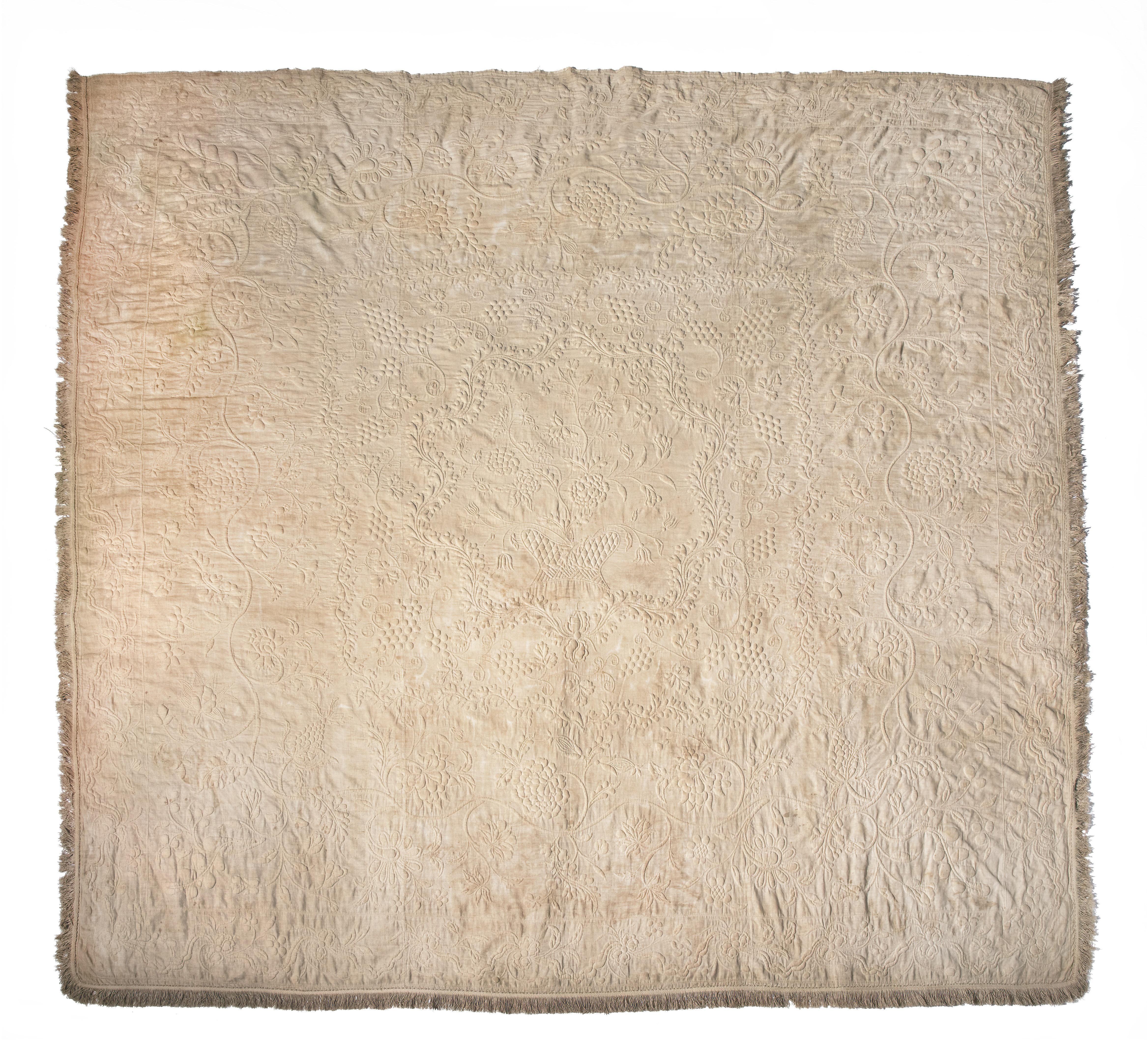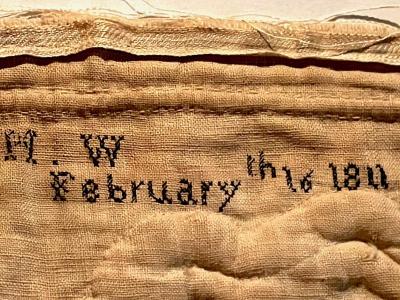Whitework coverlet
Probably New Castle, Delaware
1811
Measurements
110 1/2 in x 118 in
Materials
Linen and cotton
Credit Line
Historic Odessa Foundation
Accession Number
1981.22
Inscription
"M.W. / February th[e] 16 1811" is written in ink at the top middle of the coverlet backing.
Condition Notes
The coverlet exhibits overall staining with small sections and streaks of a lighter, almost white color.
Provenance
Ex coll. Mrs. Clifford E. (Anna M.) McFadden, who believed the coverlet was made by a member of the Janvier family of New Castle. Evidence is insufficient to identify possible Janvier family makers.
Comments
Whitework coverlets rely on their surface contours to create the shadows that represent their ornament. In this coverlet, stitching the three layers (top, backing, and batting--the middle) created areas in which some kind of filler, often cording (a braided white thread that inspired the embroidery term “candlewicking”) or cotton wadding, was worked into layers to create the three-dimensional shape.
Although often made in the home, whitework coverlets were also made professionally for commercial sale. Marseille, in southern France, was widely known for its whitework quilting. The term “Marseille work” came to be applied to mechanized, factory-made white coverlets. Among items enumerated in Mary Cowgill Corbit's (the last wife of William Corbit) short list of intended bequests in December 1843 was a “Marcaiy Counterpane” destined for her grand step-daughter Mary Pennell Corbit Naudain.
This whitework coverlet is handmade. A large spray of roses, tulips, and other flowers in a basket in the center are surrounded by an undulating stylized wreath. Outside is a grape vine with prominent clusters of grapes and an undulating wreath. A row of beading and yet another floral vine forms the outermost band, to which fringe of matching color attaches.
Bibliography
Zimmerman, A Storied Past, 200-201.

